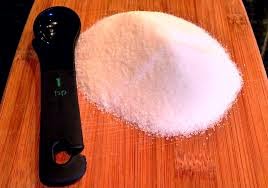Americans’ sweet tooth blamed for increases in obesity and diabetes; new website explains the dangers of too much sugar

This University of California, San Francisco project examined 8,000 studies and research papers and “found strong evidence that over-consumption of added sugar contributes to three major chronic illnesses: heart disease, Type 2 diabetes and liver disease,” Aliferis writes.
“Right now, the reality is that our consumption of sugar is out of whack, and until we bring things back into balance, we need to focus on helping people understand what the consequences are to having the average American … consume too much added sugar,” Laura Schmidt, a professor of health policy at UCSF and leader of this project, told Aliferis.
Schmidt told Aliferis that the food environment is the driver of the increased obesity of Americans in the last generation: “Sugar isn’t just making us fat, it’s making us sick.”
“It’s not like Americans suddenly lost their will power,” she said. “The only major change in the diet that explains the obesity epidemic is this steep rise in added sugar consumption that started in the 1980s.”
 |
| What our average daily diet of added sugar looks like |
Schmidt said that while not all sugar is bad, we need to determine how much sugar is too much, pointing out that Americans consume the “equivalent of 19.5 teaspoons a day in added sugar, ” Aliferis reports. She also suggest there is a need for federal guidelines to recommend a limit.
“SugarScience suggests the same limits advocated by the American Heart Association and the World Health Organization: no more than 9 teaspoons a day for men and no more than 6 teaspoons a day for women,” Aliferis writes.
A taste of what the SugarScience website tells us is: Added sugar hides in 74 percent of packaged foods; fructose, a common type of sugar, can damage your liver more than other kinds of sugar; and one 12-ounce can of soda a day can increase your risk of dying of heart disease by one-third, Aliferis reports.
It also suggest the best way to cut down on sugar is to stop drinking sugar-sweetened drinks, saying this is where we get more than one-third of added sugar in our diets. Another suggestion is for us to read nutrition labels, suggesting that if a chemical on the label ends in “ose,” it is probably sugar.
Dean Schillinger, a professor of medicine at UCSF and a primary care doctor at San Francisco General Hospital, is also part of the SugarScience team. He told Aliferis that beds in his hospital that used to be filled with AIDS patients are now filled with diabetes patients.
“The ward is overwhelmed with diabetes — they’re getting their limbs amputated; they’re on dialysis. And these are young people. They are suffering the ravages of diabetes in the prime of their life,”Schillinger told Aliferis.
“We’re at the point where we need a public-health response to it, ” he said.